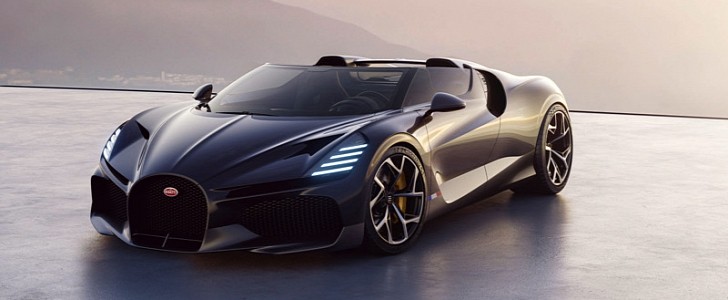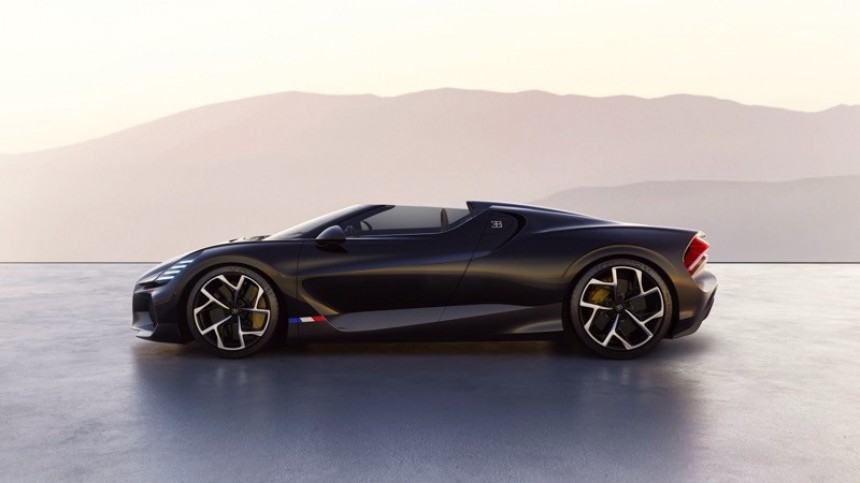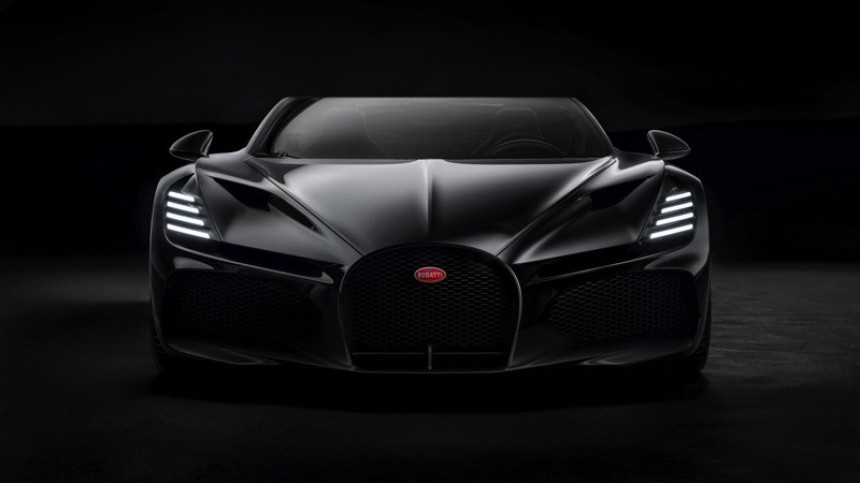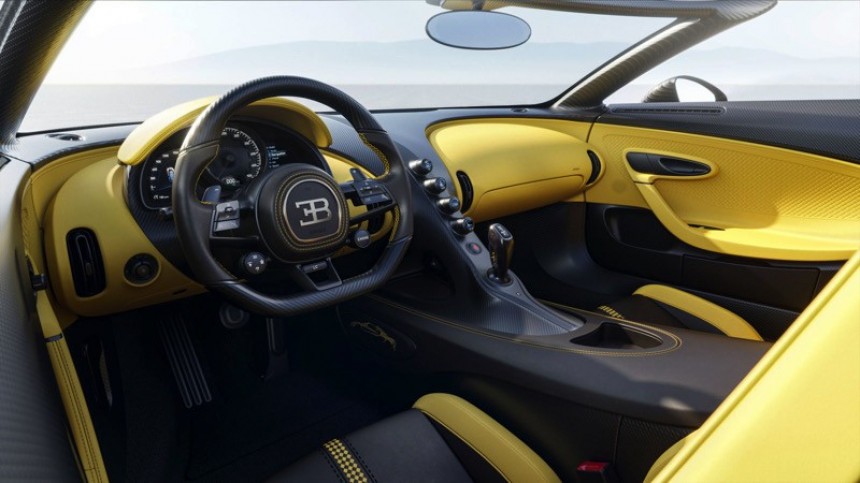Being one of the most worshiped automotive brands in the world, Bugatti has very ambitious plans for the future. Their recent merger with high-performance EV manufacturer Rimac gave us a hint about the company's strategies for the upcoming years, implying a diligent emphasis on developing alternative powertrains.
Earlier last month, the hypercar manufacturer surprised its devotees present at Pebble Beach during Monterey Car Week with the unveiling of the latest Bugatti in their lineup. Called the Mistral, it is a superb two-seater roadster conceived to be the last machine to ever come out of Molsheim, Alsace, and be equipped with the infamous W16 powerplant, commemorating a notable turning point for the company.
Even more noteworthy, the last open-top vehicle to wear a Bugatti badge was the Veyron Grand Sport Vitesse from ten years ago. In the words of Mate Rimac, Bugatti Rimac CEO: “For the final roadgoing appearance of Bugatti’s legendary W16 engine, we knew we had to create a roadster."
The vehicle shares its powerplant with the Chiron Supersport 300+, meaning a massive 8.0-liter quad-turbocharged W12 engine, mated to a 7-speed dual-clutch automatic transmission and an all-wheel-drive system that can help the all-new Mistral to achieve outstanding performance figures.
The achievable top speed of the vehicle is not clearly stated by the company, but they suggest that their goal with this hyper-machine is to "become the fastest roadster in the world once more." Of course, they give hints at the Veyron 16.4 Grand Sport Vitesse's record-breaking run of 254.04 mph (408.84 km/h) back in 2013. Considering the Mistral has about 400 more horsepower, namely 1,600 hp and 1,177 lb-ft (1600 Nm) of torque, we certainly can get a glimpse of what the latest offering from Bugatti can do in the right circumstances.
Bugatti chose to showcase the new Mistral in a beautiful color scheme, reminiscent of the Bugatti Type 57 Roadster Grand Raid, a warm black body color complemented by truffle brown and yellow accents while paying tribute to mister Ettore Bugatti himself as well because he used to configure his personal vehicles in the same visual manner.
The exterior appearance of the vehicle is truly unique. The Bugatti Mistral features a curving windscreen that shrouds around the A-pillars, blending seamlessly with the side windows, creating an almost visor-like effect that motorsport pilots are accustomed to. Furthermore, it develops into a top line that continues around the side air intakes and then shoots through the side of the vehicle towards the signature front horseshoe grill, thus masterfully recreating the famous Bugatti C-line, first introduced on the Chiron.
The front fascia sets this automobile apart from the other Bugatti models. The headlights are intricately designed to incorporate a three-dimensional functional surface that not only strikes the eye with its four light stripes nodding to the W16 Mistral’s four-wheel-drive and four turbochargers but also exhibits aerodynamic properties. Their distinctive shape channels air through the light fixture towards the wheel arches, improving downforce and high-speed stability. The wider grille takes care of the engine cooling, meaning that the two side air intakes could shrink their dimensions and only serve the intercoolers, unlike previous Bugatti models.
The engineering elegance continues around the rear of this masterpiece, where the rear X-shaped taillights, and enormous exhaust dominate the landscape. The design-follows-function approach is also visible here, where the characteristic form of the rear lights helps create a pressure drop between the side intakes and the outlets at the back of the Mistral, further aiding the much-needed cooling of the W16 powerhouse.
The interior design follows cues from the praised Chiron, utilizing luxurious materials such as lightweight titanium, solid block milled aluminum components, and premium leather options. Elegant and functional, the overall layout of the cabin, as communicated by Bugatti themselves, is meant to ensure that "all information is easily visible at up to 420 km/h."
Unfortunately, all the 99 examples Bugatti plans to fabricate have already been spoken for, carrying a starting sticker price of €5 million. Expensive indeed, but considering the sole reason that sparked this vehicle's conception, being the last of a dying breed of W16-powered machines, we expect it to become one of the most sought-after examples of what "conventional" engineering coupled with true motorsport passion could achieve in the automotive world.
Even more noteworthy, the last open-top vehicle to wear a Bugatti badge was the Veyron Grand Sport Vitesse from ten years ago. In the words of Mate Rimac, Bugatti Rimac CEO: “For the final roadgoing appearance of Bugatti’s legendary W16 engine, we knew we had to create a roadster."
The achievable top speed of the vehicle is not clearly stated by the company, but they suggest that their goal with this hyper-machine is to "become the fastest roadster in the world once more." Of course, they give hints at the Veyron 16.4 Grand Sport Vitesse's record-breaking run of 254.04 mph (408.84 km/h) back in 2013. Considering the Mistral has about 400 more horsepower, namely 1,600 hp and 1,177 lb-ft (1600 Nm) of torque, we certainly can get a glimpse of what the latest offering from Bugatti can do in the right circumstances.
Bugatti chose to showcase the new Mistral in a beautiful color scheme, reminiscent of the Bugatti Type 57 Roadster Grand Raid, a warm black body color complemented by truffle brown and yellow accents while paying tribute to mister Ettore Bugatti himself as well because he used to configure his personal vehicles in the same visual manner.
The front fascia sets this automobile apart from the other Bugatti models. The headlights are intricately designed to incorporate a three-dimensional functional surface that not only strikes the eye with its four light stripes nodding to the W16 Mistral’s four-wheel-drive and four turbochargers but also exhibits aerodynamic properties. Their distinctive shape channels air through the light fixture towards the wheel arches, improving downforce and high-speed stability. The wider grille takes care of the engine cooling, meaning that the two side air intakes could shrink their dimensions and only serve the intercoolers, unlike previous Bugatti models.
The engineering elegance continues around the rear of this masterpiece, where the rear X-shaped taillights, and enormous exhaust dominate the landscape. The design-follows-function approach is also visible here, where the characteristic form of the rear lights helps create a pressure drop between the side intakes and the outlets at the back of the Mistral, further aiding the much-needed cooling of the W16 powerhouse.
Unfortunately, all the 99 examples Bugatti plans to fabricate have already been spoken for, carrying a starting sticker price of €5 million. Expensive indeed, but considering the sole reason that sparked this vehicle's conception, being the last of a dying breed of W16-powered machines, we expect it to become one of the most sought-after examples of what "conventional" engineering coupled with true motorsport passion could achieve in the automotive world.

















